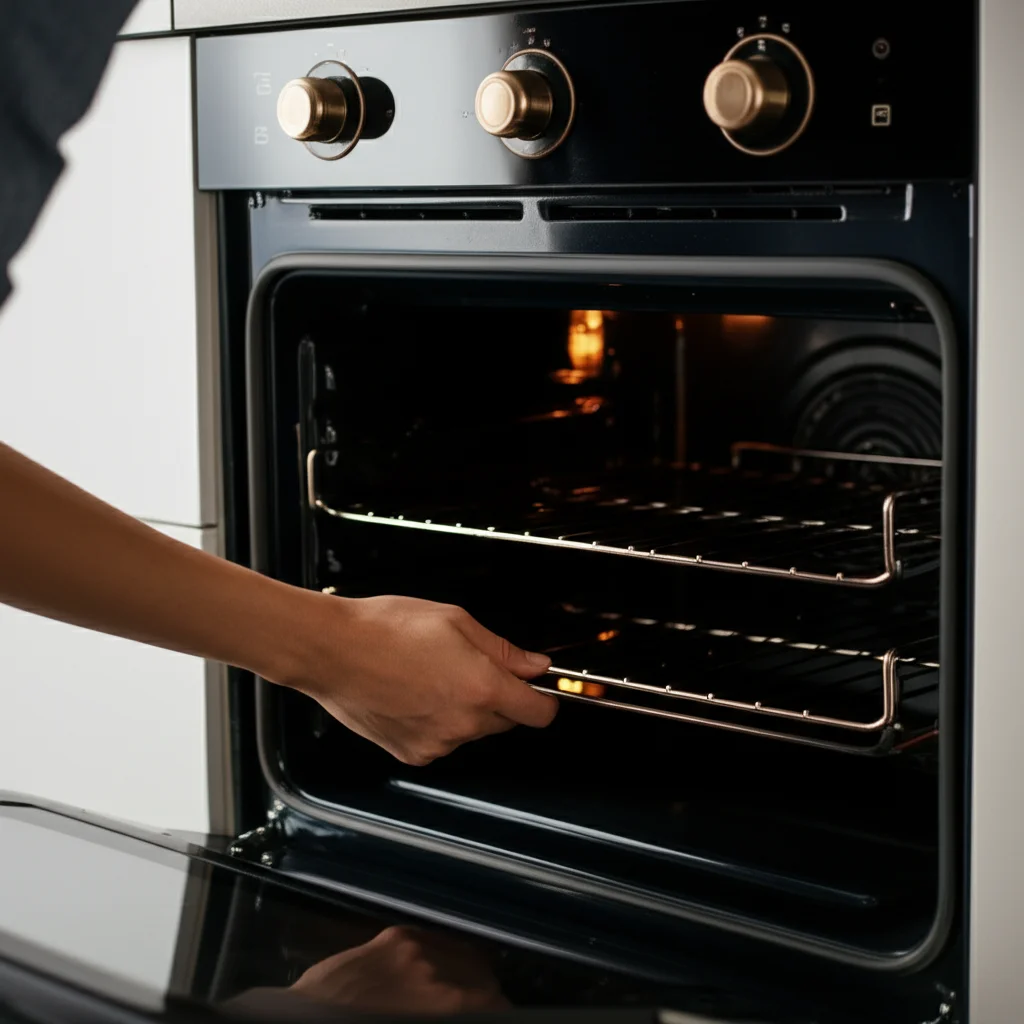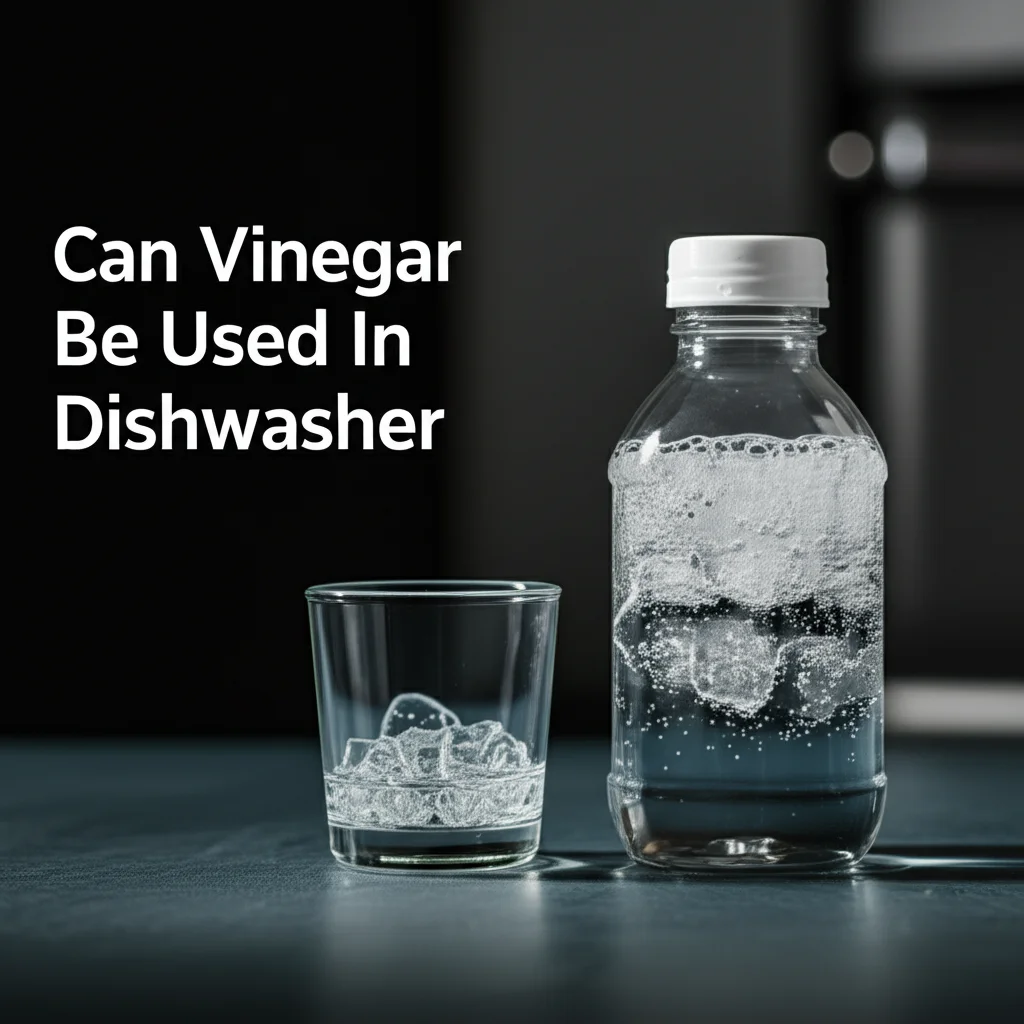· Todd Martin · Home Cleaning · 20 min read
How To Clean Oven With Lemon

Clean Oven with Lemon: A Natural Shine
Have you ever opened your oven door only to be greeted by burnt food smells and sticky grease? Cleaning the oven often feels like a difficult chore. Many commercial cleaners use harsh chemicals. This leaves behind strong fumes and can irritate your skin or lungs.
What if there was a simple, natural way to get your oven sparkling clean? I discovered how to clean oven with lemon, and it changed my routine. Lemon offers a natural, safe, and effective solution for oven grime. It leaves a fresh, citrus scent behind. This guide will show you exactly how to use this amazing fruit. We will cover everything from simple steam cleaning to tackling tough stains. Get ready to clean your oven without harsh chemicals, making your kitchen safer and smell better.
Takeaway
- Lemon offers a natural, non-toxic way to clean your oven.
- The citric acid in lemons cuts through grease and grime.
- Steam cleaning with lemon helps loosen baked-on food.
- Combine lemon with baking soda for tougher stains.
- Lemon also naturally deodorizes the oven, leaving a fresh scent.
You can clean your oven with lemon by using its acidic properties. Simply place lemon slices and water in an oven-safe bowl. Heat this mixture in the oven. The steam loosens baked-on food and grease. The lemon then helps break down grime, making it easier to wipe away.
Why Choose Lemon for Oven Cleaning?
Many people wonder if natural methods truly work for tough oven messes. I assure you, lemon is a powerful cleaner. It stands out as an excellent choice for a few clear reasons. The primary benefit comes from its main component: citric acid.
Citric acid is a natural acid. It effectively breaks down grease and food residue. This makes dirt easier to wipe away. It works without the need for harsh chemicals. Commercial oven cleaners often contain strong alkalis. These chemicals can irritate skin and airways. Lemon provides a gentle, non-toxic alternative. This means a safer home environment for your family and pets. You avoid breathing in dangerous fumes. You also prevent chemical residues from touching your food.
Beyond its cleaning power, lemon offers a refreshing scent. Instead of a strong chemical odor, your kitchen smells fresh and clean. This natural deodorizing quality is a big plus. It neutralizes burnt food smells effectively. I find this aspect especially appealing. It makes the cleaning process much more pleasant. Lemon is also inexpensive and widely available. You likely have some in your kitchen already. Using it reduces your reliance on specialty cleaning products. This saves money and supports a more sustainable lifestyle.
Gathering Your Lemon Oven Cleaning Supplies
Before you start cleaning, make sure you have all the necessary items. Getting everything ready beforehand makes the process smooth. You do not want to stop mid-clean to find a missing tool. I always gather my supplies first.
Here is a simple list of what you will need for a successful lemon oven cleaning:
- Lemons: You will need 2-4 fresh lemons. Their juice is the star ingredient. More lemons provide more cleaning power and a stronger scent.
- Oven-Safe Bowl or Baking Dish: Choose a glass or ceramic dish. It must hold water and lemon slices. Make sure it is safe to use at high oven temperatures.
- Water: Tap water works perfectly. You will fill your bowl with it.
- Sponge or Microfiber Cloths: These are for wiping down the oven interior. Microfiber cloths are great for absorbing grime and leaving surfaces streak-free.
- Rubber Gloves (Optional but Recommended): Protect your hands from grime. While lemon is natural, prolonged contact can dry out skin.
- Scrub Brush or Scraper (for tough spots): Some stubborn baked-on areas might need extra scrubbing. A nylon brush or a plastic scraper helps without scratching the oven.
- Baking Soda (Optional): This is for a stronger cleaning paste. We will discuss its use for very tough spots later.
- Small Spray Bottle (Optional): Useful for applying a lemon-water solution to specific areas.
Having these items ready ensures you can follow each step without interruption. It makes the entire cleaning session more efficient. This prepares you to tackle even the dirtiest oven.
Step-by-Step Guide: How to Steam Clean Oven with Lemon
This method uses steam and lemon’s natural acidity to loosen grime. It is simple, effective, and free of harsh chemicals. I use this method often for routine cleaning.
Preparing the Oven for Cleaning
Before you begin the lemon steam treatment, you must prepare your oven. This initial step helps the lemon work its magic more effectively. It also prevents any safety issues.
First, make sure your oven is completely cool. Never clean a hot oven. It poses a burn risk. Next, remove everything from inside the oven. Take out oven racks, baking sheets, and any loose debris. This includes crumbs or large pieces of burnt food. You can use a vacuum cleaner attachment or a brush to sweep out crumbs from the bottom. Removing these items gives you clear access to all surfaces. It also prevents them from getting in the way of the steam. A clean slate allows the lemon steam to fully penetrate and loosen the baked-on grime. This preparation step makes the actual cleaning much easier.
The Lemon Steam Method
Now, let’s get into the main part of how to clean oven with lemon using steam. This process is straightforward. It relies on the power of steam combined with the citric acid from lemons.
- Slice the Lemons: Take your 2-4 fresh lemons. Cut them into thick slices or halves. Do not worry about neatness; just make sure they are open to release their juice.
- Add Water and Lemons to Bowl: Place the lemon slices into your oven-safe bowl. Pour enough water into the bowl to cover the lemon slices. You want about 1-2 cups of water. The exact amount depends on your bowl size.
- Heat the Lemon Mixture: Place the bowl with lemon and water inside your cool oven. Close the oven door. Set your oven temperature to 250-300°F (120-150°C). Let the mixture heat for 20-30 minutes. As the water heats, it will produce steam. This steam fills the oven cavity. The lemon-infused steam begins to soften and loosen baked-on grease and food particles. You will notice the oven glass may fog up. This shows the steam is working.
- Cool Down and Steam Infusion: After 20-30 minutes, turn off the oven. Leave the oven door closed. Let the bowl with the lemon water sit inside the oven for at least 30-60 minutes. The residual heat keeps the steam active. This gives the lemon steam more time to work on stubborn spots. It also allows the oven to cool down safely.
- Wipe Away Grime: Once the oven is cool enough to touch, open the door. Carefully remove the bowl. Be careful, as the water can still be hot. Now, take a damp sponge or microfiber cloth. Start wiping down the interior surfaces of your oven. You will find that most of the grease and grime comes off easily. The steam has done most of the hard work. For any tougher spots, a bit more scrubbing might be needed. The lemon’s acidity helps the dirt lift away.
- Final Wipe: After cleaning, use a clean, damp cloth to wipe down all surfaces again. This removes any lemon residue. Then, use a dry cloth to buff the surfaces. This leaves your oven sparkling and streak-free. Enjoy the fresh, clean lemon scent.
This steam method is fantastic for general cleaning. It makes a significant difference without much effort.
Tackling Tough Grime with Lemon and Baking Soda
Sometimes, an oven has very stubborn, baked-on grime that pure lemon steam cannot fully conquer. For these challenging spots, I turn to a powerful duo: lemon and baking soda. This combination creates a fizzy, abrasive paste that cuts through even the most set-in messes.
Baking soda is a mild abrasive and a natural deodorizer. When you combine it with the acid from lemon, a chemical reaction occurs. This reaction creates carbon dioxide gas, which produces bubbles. These bubbles help lift and break down tough stains. It makes a very effective scrubbing agent. I find this mixture particularly good for removing burnt-on spills or stubborn grease layers. It is much safer than harsh chemical cleaners.
Here is how to use lemon and baking soda for tough oven grime:
- Create a Baking Soda Paste: In a small bowl, mix about 1/2 cup of baking soda with a few tablespoons of water. Add water slowly until you get a thick, spreadable paste. It should resemble toothpaste.
- Add Lemon Juice: Squeeze the juice of one lemon into the baking soda paste. The mixture will start to fizz and bubble. This reaction is normal. It indicates the cleaning power activating.
- Apply the Paste: Spread this lemon-baking soda paste directly onto the heavily soiled areas inside your oven. Focus on burnt-on food, thick grease spots, and the bottom of the oven. You can use an old brush or your gloved hand to apply it evenly. For general oven cleaning, you might also consider using a proven method like how to clean oven with baking soda as a primary approach, then use lemon for specific tough spots or deodorizing.
- Let It Sit: Allow the paste to sit and work its magic for at least 2-4 hours. For very tough stains, I let it sit overnight. The longer it sits, the more time the ingredients have to break down the grime.
- Scrub and Wipe: After the sitting time, use a damp sponge or a scrub brush to scrub the paste and the loosened grime. You will notice the gunk coming off with less effort. The baking soda provides the abrasive power. The lemon helps dissolve the grease. For really tough spots on the bottom of your oven, targeted cleaning might be required. You can learn more about specific techniques for how to clean bottom of oven in another guide.
- Rinse Thoroughly: Use a clean, damp cloth to wipe away all the paste and grime. You may need to rinse the cloth several times to ensure all residue is removed. This step is important for a truly clean finish.
This method works wonders for ingrained dirt. It restores your oven to a much cleaner state. It still keeps your kitchen free from harsh chemical fumes.
Cleaning Specific Oven Parts with Lemon
The oven interior is just one part of the cleaning challenge. Various components of your oven also accumulate dirt and grease. Fortunately, lemon can help clean these parts too. I pay special attention to these areas for a fully sparkling oven.
Oven Racks
Oven racks often collect the worst of the baked-on grease and food drips. They can be very difficult to clean. Lemon offers a good starting point for them.
- Remove and Soak: Take the racks out of the oven. If possible, place them in a large tub or your kitchen sink. Fill it with hot water and add slices from 1-2 lemons. You can also add a splash of lemon juice. Let them soak for several hours or overnight. This helps to loosen the baked-on residue. For methods that do not require a bathtub, explore options like how to clean oven racks without bathtub.
- Scrub and Rinse: After soaking, use a stiff brush or a scouring pad. Scrub the racks to remove the softened grime. The lemon water helps break down the grease. Rinse them thoroughly with clean water. If grease still sticks, lemon and baking soda paste can be applied directly to the racks for a stronger scrub.
Oven Door Glass
A greasy oven door glass can obscure your view of cooking food. It makes the oven look dirty. Lemon is excellent for glass cleaning.
- Prepare Lemon Solution: Mix equal parts lemon juice and water in a spray bottle. Shake it well.
- Apply and Wipe: Spray the lemon solution directly onto the inside of your oven door glass. Let it sit for 5-10 minutes. The lemon acid will work on the grease. Then, wipe it clean with a microfiber cloth. For stubborn spots, you may need a gentle scrub with a paste of lemon juice and baking soda. This method also works well for cleaning the inside of the glass. If you need more detailed instructions, a guide on how to clean inside oven glass can provide more steps.
- Buff for Shine: Use a clean, dry cloth to buff the glass. This removes any streaks and leaves a clear, sparkling finish.
Oven Heating Elements and Coils
The heating elements and coils need careful handling. They are not typically cleaned in the same way as the oven interior.
- Dust and Wipe: Ensure the oven is completely cool and unplugged. Use a dry cloth or a soft brush to gently wipe away loose crumbs and dust from the heating elements. Do not use any liquids directly on the elements themselves.
- Lemon for Surrounding Areas: If there is grease or grime on the metal surfaces around the heating elements, you can use a damp cloth with a bit of lemon juice. Wring the cloth out well so it is only slightly damp. Wipe the surrounding areas carefully. Avoid getting any liquid directly on the elements. For detailed guidance on how to clean oven coils or heating elements, consult specific guides to ensure safety. For deeper cleaning of the entire appliance, understanding how to clean a gas oven can also be useful as part of a comprehensive cleaning routine.
Taking care of these specific components ensures your entire oven is clean. Lemon offers a safe way to tackle these often-overlooked areas.
Beyond Cleaning: Deodorizing and Maintaining Your Oven
Cleaning your oven is not just about removing visible grime. It is also about eliminating lingering odors and keeping it fresh for longer. Lemon is an excellent natural deodorizer. I often use it for this very purpose, even between deep cleans.
After the cleaning process, you might notice a fresh citrus scent remaining in your oven and kitchen. This is one of lemon’s fantastic benefits. Burnt food and grease can leave unpleasant smells. Lemon’s natural fragrance helps neutralize these odors. It does not just mask them; it actively helps to break them down. This leaves a clean aroma instead of a chemical one. You can even use lemons purely for deodorizing without a full cleaning. Simply place lemon slices and water in a bowl, as described in the steaming method. Heat it in a cool oven for 15-20 minutes. Then, let it sit as it cools. This will refresh your oven between uses.
Maintaining your oven regularly is key to avoiding major cleaning jobs. Here are some simple tips to keep your oven in good shape:
- Wipe Up Spills Immediately: If food spills while cooking, try to wipe it up once the oven cools down. Fresh spills are much easier to clean than baked-on ones.
- Use Oven Liners: Place an oven liner or a baking sheet on the bottom rack. This catches drips and spills. It prevents them from baking onto the oven floor. This makes cleanup much simpler.
- Regular Steam Clean: Perform the lemon steam cleaning method every few weeks. This prevents grease and food residue from building up. It makes deep cleaning less frequent and less difficult. Even if you have a gas oven, regular upkeep helps. Consider techniques from how to clean gas oven grates for complete maintenance.
- Deodorize After Strong Smells: After cooking strong-smelling foods like fish or garlic, run a quick lemon steam cycle. This eliminates lingering odors quickly. This also helps when you need to remove greasy smells. For specific greasy messes, you might look into how to clean greasy oven or how to clean grease from oven for more detailed advice.
By incorporating these simple maintenance habits, you can keep your oven cleaner and fresher. You will extend the time between intensive cleaning sessions. Lemon becomes a useful ally in this ongoing effort.
Safety Tips and Important Considerations
While lemon is a natural and generally safe cleaner, there are important safety tips to remember. Following these guidelines ensures a safe cleaning process. It also protects your oven from potential damage. I always prioritize safety in my cleaning routine.
First, always ensure your oven is completely cool before beginning any cleaning. Attempting to clean a hot oven is dangerous. It can cause severe burns. Allow ample time for the oven to cool down after use. This applies to both the steaming method and direct scrubbing.
Second, disconnect your oven from power before cleaning if you are doing a deep clean or working near electrical components. This reduces the risk of electric shock, especially when dealing with moisture. For parts like heating elements, simply unplugging the oven is critical.
Third, avoid getting excess liquid into electrical components or vents. While lemon juice is natural, electrical parts and vents are not designed for direct contact with liquids. Use damp cloths, not soaking wet ones. Wring out sponges thoroughly before wiping. This prevents short circuits or damage to the oven’s internal workings. This is especially important when cleaning components such as the oven hood, which has its own cleaning requirements as outlined in articles like how to clean oven hood.
Fourth, do not mix lemon with commercial oven cleaners. The combination of natural acids with harsh chemicals can create dangerous fumes. Stick to one cleaning method at a time. If you use lemon, ensure no chemical residues remain from previous cleanings.
Fifth, test on an inconspicuous area if you are unsure about your oven’s finish. Most oven interiors are safe for lemon. However, some specialized coatings or materials might react differently. A quick spot test ensures no discoloration or damage occurs.
Finally, use common sense. If a stain is too tough or if you encounter an issue that seems unsafe, stop. Sometimes, professional help or a different cleaning approach is needed. For specific problems like how to clean oil out of oven, additional methods might be more effective. If you have any concerns about unusual stains such as melted plastic, specialized guides like how to clean melted plastic from oven can offer tailored advice.
By keeping these safety tips in mind, you can confidently clean your oven with lemon. You will achieve a clean, fresh result without any worries.
Troubleshooting Common Oven Cleaning Challenges
Even with the best natural cleaning methods, you might encounter some common challenges. Not every oven responds the same way. Sometimes, you need a different tactic. I have faced these issues myself and have learned how to overcome them.
One common issue is very old, baked-on grease. For grime that has been accumulating for years, a single lemon steam cleaning might not be enough. The solution here is persistence and patience. Repeat the lemon steam method several times. Allow the steam to work longer each time. You can also combine the steam method with the baking soda and lemon paste treatment. Apply the paste, let it sit for a very long time (even overnight), then follow up with another steam cycle before scrubbing. This layered approach helps break down layers of stubborn grease.
Another challenge is stubborn burnt food spots. These spots can be particularly difficult. They often have carbonized layers. After using the lemon steam, directly apply a generous amount of lemon-baking soda paste to these specific spots. Let it sit for several hours. Then, use a non-scratch scrub brush or a plastic scraper. Gently scrape away the burnt residue. The lemon helps to lift it, and the baking soda provides the necessary abrasion. Sometimes, a second application and more sitting time are needed.
You might also find that odors linger even after cleaning. While lemon is an excellent deodorizer, very strong, deep-set odors might need extra attention. After cleaning, place a bowl of fresh lemon slices or a cut lemon half in the cool oven. Leave it there overnight. The lemon will absorb remaining odors. You can also leave a small bowl of baking soda in the oven for a few days to absorb lingering smells. This helps to make your oven truly smell fresh.
Finally, uneven cleaning can be an issue. Some areas of the oven might get cleaner than others. This often happens because steam or cleaning solutions do not reach all corners evenly. Make sure to wipe down all surfaces thoroughly. Pay special attention to the back, sides, and corners. For specific areas like the oven glass, make sure you address both inner and outer surfaces effectively. If you are cleaning a convection oven, remember its unique airflow system might distribute grime differently, so methods for how to clean convection oven can be useful. If you have an air fryer oven, you can also learn about specific cleaning tips for how to clean an air fryer oven.
By addressing these common challenges with targeted approaches, you can achieve a truly clean oven. Lemon offers versatility to tackle many different types of grime.
FAQ Section
Is lemon safe for all oven types?
Yes, lemon is generally safe for most standard oven interiors, including stainless steel, enamel, and glass. The citric acid is mild compared to harsh chemical cleaners. Always avoid direct contact with electrical components. Test a small, hidden area if you have a unique oven finish.
How often should I clean my oven with lemon?
For general maintenance, steam clean your oven with lemon every 2-4 weeks. If you cook frequently or experience spills, clean it more often. For very heavy use, a deeper clean with lemon and baking soda every 1-2 months works well.
Can lemon remove burnt-on grease?
Lemon alone can soften light to moderate burnt-on grease via steam. For tough, heavily burnt-on grease, combine lemon with baking soda. The paste provides abrasive action and chemical reaction, effectively breaking down more stubborn residues.
Do I need to rinse after using lemon?
Yes, it is important to rinse the oven surfaces after cleaning with lemon. Use a clean, damp cloth to wipe away any lemon residue and loosened grime. This ensures a clean finish and prevents any sticky feeling from sugar in the lemon juice.
What if the lemon smell is too strong?
The lemon smell is usually pleasant and dissipates quickly. If it feels too strong, simply open your oven door and kitchen windows for air circulation. The fresh scent will fade naturally over a few hours, leaving a clean, neutral aroma.
Can I use bottled lemon juice instead of fresh lemons?
Fresh lemons are ideal for their potent citric acid and natural oils. They also provide the best natural aroma. Bottled lemon juice can work in a pinch for the steam method. However, its effectiveness may be slightly less, and the scent might not be as vibrant.
Conclusion
Cleaning your oven does not have to be a dreaded chore filled with harsh chemicals. I hope this guide has shown you the power of a simple, natural ingredient: the lemon. From tackling everyday grease to loosening stubborn baked-on grime, learning how to clean oven with lemon offers an effective and eco-friendly solution. It leaves your kitchen smelling wonderfully fresh.
We covered the benefits of lemon’s citric acid, step-by-step steam cleaning, and powerful baking soda combinations. We also discussed cleaning specific parts and maintaining your oven’s freshness. By embracing these natural methods, you can achieve a sparkling clean oven without worry. You avoid toxic fumes and irritating residues. Try these lemon cleaning tips in your own home. See the remarkable difference for yourself. Your oven will thank you, and your kitchen will feel cleaner and more inviting. Give it a try next time your oven needs a refresh!





